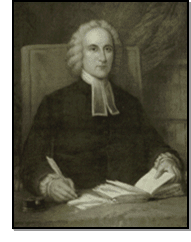Mary Rowlandson was captured by the Indians from her home in Lancaster, Massachusetts, during King Philip's War of 1675. She was held for 11 weeks and 5 days before being ransomed. She wrote a narrative about her captivity and "restoration." This narrative became one of the most representative documents by which white New Englanders remembered King Philip's War. After being trapped in the wilderness as a prisoner of war, and surviving. Mary Rowlandson saw herself as spiritually renewed and redeemed. While many of the events of her account are probably true, her narrative is still somewhat mythical and shaped, both consciously and unconsciously, to fit her religious and cultural ideals (http://www.bookrags.com/printfriendly/?p=gale&u=rowlandson-mary-aaw-01).
There appear to be two different perspectives in Rowlandson's narrative. This could be a result of Rowlandson suffering from a mental disorder known as survivor syndrome. She tries to reconcile her feeling of guilt over having survived the Indian attack on Lancaster and her captivity with her obligation to paint her experience in the hues of providential affliction. Rowlandson recounts the events of her captivity in a vigorous and homely style, combining close observation with simple, direct expression. When she pauses to consider the significance of a particular detail, her style becomes more elevated as she employs biblical quotations and metaphors to convey her meaning (http://public.wsu.edu/~campbelld/amlit/captive.htm).
Throughout the narrative there are evidences of God's providence for His chosen. His chosen need only wait patiently and suffer nobly to receive deliverance. Yet Rowlandson barters her services for food and money and actively navigates through her captors' society. This is a woman that is self-reliant and capable of surviving hardships in her own right. For instance, Mary makes a shirt for King Philip's son and is paid one shilling. She makes a shirt for another Indian and harasses that Indian until he makes payment of a knife. Mary is taking control of her life and her ability to survive (http://enh241.wetpaint.com/page/Mary+Rowlandson).
Rowlandson's tone is colored by hindsight. She tells the story of her captivity having been freed and knowing how the story ends. Though she is often filled with despair, her overall tone remains hopeful. She presents her story as a lesson to others. Because of Rowlandson's intimiate relationship with her Indian captors, her book is interesting for its treatment of cultural contact. In the use of autobiography, typology, and the jeremiad, Rowlandson's book helps us to understand the Puritan mind (http://www.uncp.edu/home/canada/work/canam/rowlands.htm) (http://www3.dbu.edu/mitchell/rowlands.htm).
Mary Rowlandson remained a Puritan woman in her narrative. Mary was a woman to be reckoned with before her captivity began. She was a minister's wife but did not attend Sunday service regularly. She admitted to smoking tobacco in excess and enjoying the pleasure of it. During her captivity, she remained aware of her surroundings and the limits placed upon her by her captors. Mary was able to survive because of her mental and physical strength. Above all Mary Rowlandson was able to adapt through her own abilities and through the Grace of God. She was a Puritan woman with a strong pioneering spirit.














